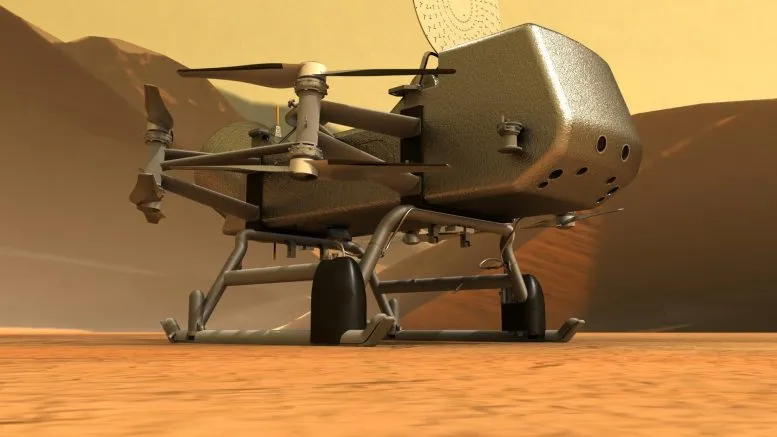NASA has made a crucial decision to continue the development of its Dragonfly drone mission, which aims to land a car-sized drone on Saturn’s largest moon, Titan, in 2034. This significant milestone marks the beginning of the final design, construction, and testing phase of the mission, with a launch date set for July 2028.
The Dragonfly mission is a collaborative effort between NASA and Lockheed Martin, led by the John Hopkins University Applied Physics Laboratory. The team has shared a video showcasing the innovative approach they will use to land the drone on Titan’s surface in 2024. According to the plan, the spacecraft that transports Dragonfly from Earth will release the drone in close proximity to Titan’s surface. The drone will then immediately start its rotors to achieve a smooth and controlled landing.
This process bears some similarities to NASA’s Perseverance rover landing on Mars in 2021, although the complexity and risks involved are different. Mission controllers will undoubtedly feel intense pressure as they monitor the landing process, waiting for confirmation of Dragonfly’s successful touchdown.

NASA’s Dragonfly Drone Mission to Titan Clears Critical Milestone
Titan’s unique environment provides scientists with a unique opportunity to study the moon’s surface and atmosphere, which share some similarities with the early Earth. By conducting research on Titan, scientists hope to gain insights into the origins of life on our planet. The success of NASA’s Ingenuity helicopter mission to Mars, which ended earlier this week after 72 flights, has given a significant boost to the Dragonfly team, providing valuable lessons and experience for their upcoming mission.
The Dragonfly mission is part of NASA’s New Frontiers program, which includes notable missions such as New Horizons to Pluto and the Kuiper Belt, Juno to Jupiter, and OSIRIS-REx to the asteroid Bennu. With this critical milestone achieved, the Dragonfly team is now preparing for the next phase of their mission, focusing on final design, construction, and testing before the launch in 2028.
The excitement and anticipation surrounding the Dragonfly mission are palpable, as scientists and engineers work tirelessly to ensure the success of this groundbreaking endeavor. The landing of a drone on Titan’s surface will be a historic achievement, offering scientists a unique opportunity to study this fascinating celestial body up close. As the mission progresses, the world eagerly waits for the moment when Dragonfly touches down on Titan, marking a significant milestone in the exploration of our solar system.








































